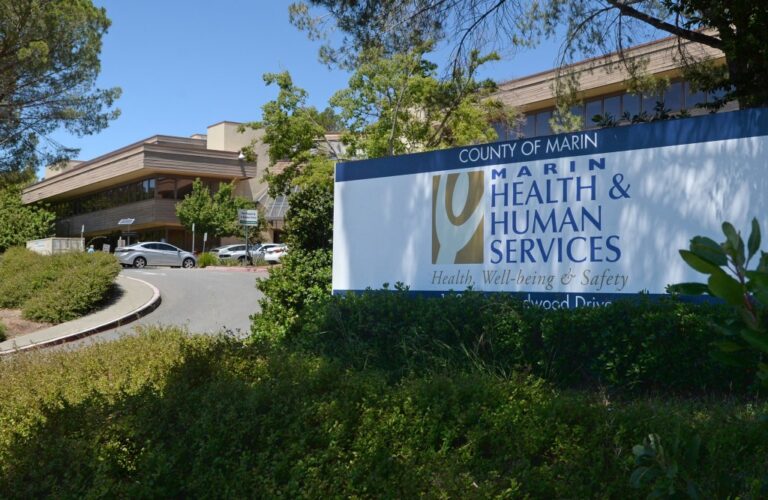Marin County officials are aiming to get more specific data on residents who commit suicide and make the statistics more accessible to the public.
The county has established a suicide prevention data dashboard and a suicide and overdose death investigation team to conduct detailed death investigations in certain cases.
“We know many people may think that suicide is a topic to avoid and that talking about it more openly might lead to suicidal thoughts,” said Dr. Matt Willis, the county’s public health officer. “In fact, the opposite is true.”
“By shedding light on this issue and starting a dialogue, we hope to raise awareness and get the message out to people struggling with suicidal thoughts that help is available,” he said. To contact the Suicide and Crisis Hotline, dial 988.
“The Suicide and Overdose Fatality Review (SOFR) process allows the community to track trends in near real-time, determine who is most at risk in our community, and consider systemic changes that may prevent future suicides and overdose deaths,” Todd Schirmer, the county’s behavioral health officer, wrote in an email.
The dashboard can be found at marinhhs.org/suicide-prevention-data-dashboard . The dashboard reveals who is at highest risk for suicide in Marin County: Men make up 49% of the county’s population and account for 74% of suicides.
“It’s more prevalent in older men over 45 and in white men,” Willis says, “and across most dimensions of health, we see that low-income communities and communities of color are disproportionately affected. Suicide is an exception to that pattern, and we need to get specific to understand it.”
White residents of Marin County are much more likely to commit suicide than their African-American, Asian, and Latino counterparts. Although white residents make up 70% of the county’s population, they account for 88% of the county’s suicides.
African American residents make up 2% of Marin’s population and 2% of its suicides. Latinos make up 17% of Marin’s population and 7% of its suicides.
The dashboard also shows that women in Marin County are much more likely than men to visit a hospital emergency room for intentional self-harm: Women make up 51% of the county’s population but account for 65% of self-harm reports.
In Marin County, white residents are less likely to self-harm than people of color, and while African-American residents make up a small percentage of the total population, they have the highest rates of self-harm, accounting for 7% of the county’s self-harm cases.
Age is also a factor when it comes to self-harm: Marin County residents between the ages of 15 and 24 account for 45% of self-harm injuries.
Willis said one of the reasons for gender differences when it comes to suicide and self-harm is the way men and women typically attempt suicide: drug overdose is the primary method for women, while men are more likely to use firearms.
“For people who use guns, it’s very deadly,” Willis said.
Veterans in Marin County are four times more likely to commit suicide than non-veterans, and 60 percent of veteran suicides involve a firearm.
Willis said many of the findings in the dashboard are not specific to Marin County, but the county’s new suicide and overdose death investigation team is trying to uncover more specific warning signs by focusing intensively on a few local cases.
Schirmer wrote that the team hopes to “learn about individual and systems factors, missed opportunities, and ultimately ways in which premature deaths might have been avoided to inform prevention and intervention efforts.”
“This process is critical to the county’s goal of reducing suicide and overdose deaths,” he said.
The team received training and technical assistance from Dr. Kimberly Repp, chief epidemiologist for Washington County, Oregon, and a nationally known expert in suicide mortality research. Dr. Repp has analyzed more than 200 Washington County suicides across 47 risk factors and circumstances. This approach has led to a 40% reduction in suicides in the county.
Risk factors identified by Repp that occurred in the two weeks before death included relationship problems, substance use and criminal legal issues. Common risk factors at the time of death were mental health problems, intimate partner problems and social isolation.
Additionally, the majority of people who commit suicide contact the health care system within two weeks of their death.
“If we can better understand what events are happening in someone’s life when they start to think about suicide, then rather than waiting, we can predict risk and provide the support that’s relevant to those types of events,” Willis said.
Willis said stainless steel netting recently installed on both sides of the Golden Gate Bridge appears to be helping.
“2023 will be the first year that a Marin County resident doesn’t commit suicide by jumping off a bridge,” he said.
Between 2018 and 2022, 14 Marin County residents died after jumping off bridges.


